Location
Germany, Munich
Service
Customer experience innovation through design thinking and customer journey analysis
Client description
Vegan meat producer with various assortments
Client turnover
+ 2 million euro (source: dnb.com – estimated)
Project description
Already launched a year ago at the time, the brand was looking to optimize the experience for its customers. Their products were recently distributed in most Lidl and Edeka supermarkets in Germany. Therefore, the brand needed the following:
- Understanding the target consumers
- Analysis of the customer experience and the stages the customer goes through identifying customer needs, key points of interaction with the product, solutions for improvement.
- Analysis of customer loyalty and solutions to improve it
Results
1. Understanding the target consumers
To understand the target consumers the following was done:
- 5 direct interviews with the brand’s customers
- 33 target consumers surveyed (vegans and meat lovers)
- Analysis of 42 customers in order to identify common interests, lifestyle, priorities and principles (8 different categories – Personas – were identified)
The brand wanted to target also regular meat consumers. In order to find out how we could target them we segmented our researched consumers into two groups: vegan consumers and meat-loving or balanced consumers (they prefer both animal and vegan meat). This helped us to get a bigger picture about each consumer segment.
1. Direct interviews
They were conducted with 5 clients of whom two identified themselves as vegan and three as balanced or meat-loving consumers. Interviews were conducted in German some online and some face-to-face.
From the interviews we were able to understand the following:
- Reasons for choosing vegan products
- What is their perception of the brand and other competitors
- The importance of different product features and benefits
- The influence of the family, social and cultural environment on their perception and consumption of vegan meat
Examples extracted from three different interviews (translated from german):
Well, some of my friends were vegetarians before me, and it worked out pretty well. My best friend is now the same way too, because he saw how good I feel. Of course I have my friends who say they need meat, and my dad is skeptical because he doesn't know what's in it.
I hadn't eaten a meat substitute in a long time and none that came close to real meat. It brought back so many memories of my grandmother cooking me bolognese and gave me a very pleasant feeling.
Prejudice is still clearly visible. Comments like "that's not healthy either" or "there are just chemicals in it" are common, or of course the classic "it can't taste good without meat". However, there are also curious people who want to try the products and really liked them.
5. Their entire experience with the product from awareness to testing and loyalty as well as positive and negative emotions felt
2. Surveys
Two questionnaires were developed, one in English and one in German, with the German questionnaire receiving the most responses (27 out of a total of 33). In the questionnaire, respondents were divided into two groups according to their meat preference: vegan consumers and meat lovers/balanced consumers. This was done in order to have a differentiated understanding for the two types of consumers, analysing them together made the overall picture irrelevant as the two types of consumers could have different opinions in many respects. This is also the reason why different questions will have a different number of answers.
Excerpts from the questionnaire:
Which category would you fall into? (Habitual meat eater, Meat lover, Vegan, Vegetarian, Flexitarian)
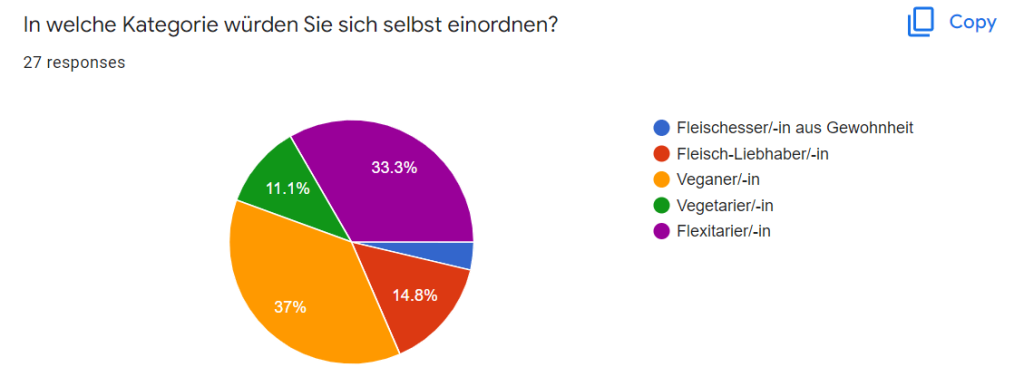
What do you look at when making the decision to buy meat? (both vegan and animal meat) (Taste, Save time, Save money, Healthy nutrition, Protect the environment, Meet protein needs)
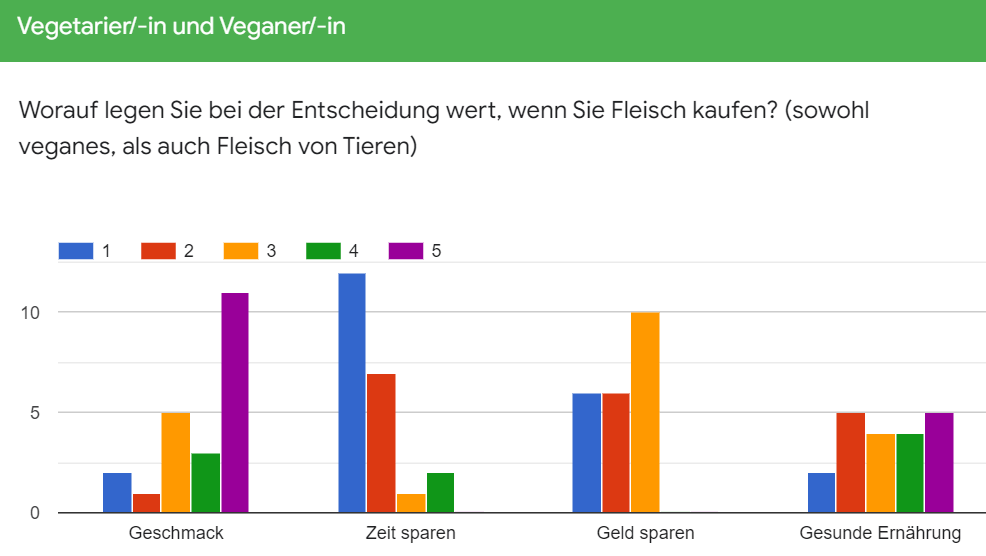
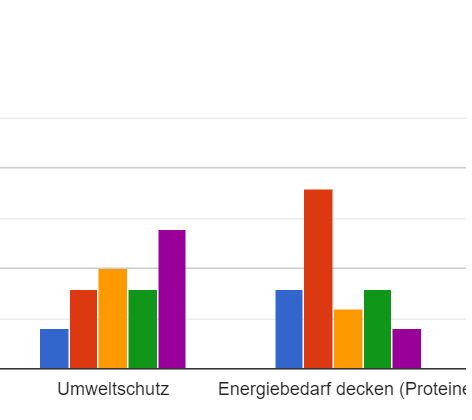
How important are ingredients or technical specifications to you? For example, if you want to know exactly what a product contains before you buy it.
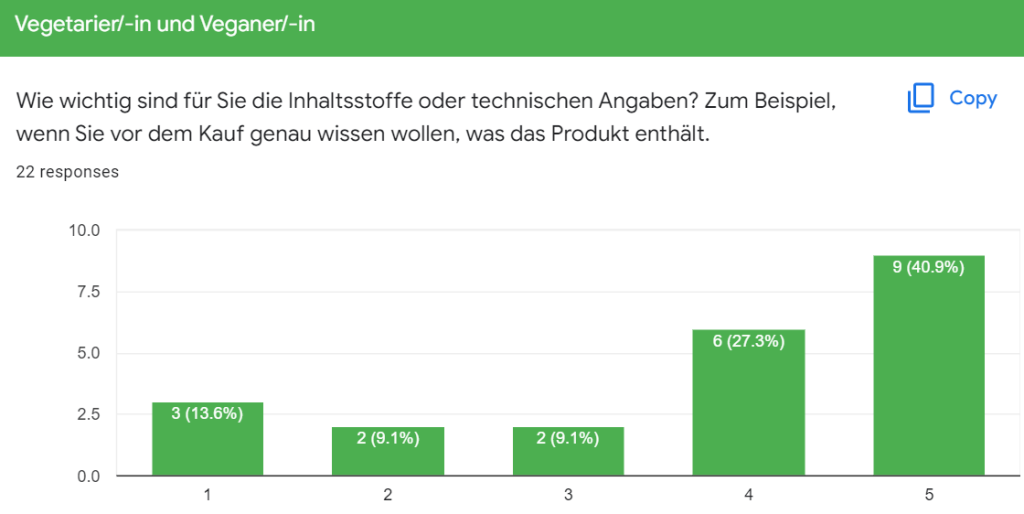
How did you find out about vegan meat (meat substitutes) (Online, Friends, Supermarket, Advertising, Social media)
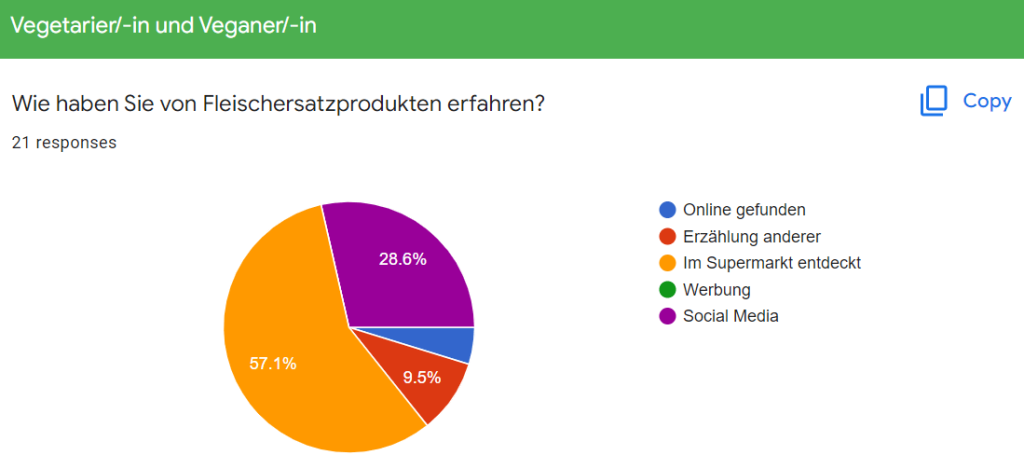
3. Customer similarity analysis (Personas)
Following the analysis, 8 profiles of vegan meat consumers were created according to the needs of each category, behaviour, interests, socio-professional status. This analysis helped us to better understand consumer motivation, lifestyle and interests.
2. Customer experience analysis
This analysis was divided into 6 stages completed by each client:
- Awareness
- Consideration
- Purchase
- Preparation
- Actual tasting
- Promotion of product to acquaintances (positive or negative)
Each stage described the following: Customer objective corresponding to the respective stage, Process followed, Touchpoints, Emotions and Pain points, Moments of truth, Ideas and opportunities for improvement.
The following was carried out to achieve this:
- Physical visits to partner supermarkets on different days to observe in-store positioning, consumer interest and reaction to the product.
- Analysis of the website to identify points affecting the experience and perception of visitors
- Analysis of product design (packaging, colours chosen, fonts, image) to identify opportunities for improvement and weaknesses.
- Preparing the product ourselves to see what the head-tail experience is (including the experience of buying online vs buying from the supermarket). In this way we were able to identify a lot of strengths and points that could be improved by putting ourselves in the consumers’ shoes.
- Analysis of reviews provided online by customers. (Many provided detailed information about their experience and less pleasant situations)
Proposed recommendations we are proud of:
- Following the analysis, we were able to recommend the most efficient place for product placement in the supermarket
- We identified excellent opportunities to improve the business model by including a new revenue stream and addressing a new distribution channel
- We have been able to provide a clear picture of the fears, experienced emotions and key points that consumers have and how these can be addressed
- Provided a clear picture of how vegan consumers perceive the product compared to meat-loving consumers: thus we could also recommend how each typology should be approached
- Recommendations on the introduction of new types of vegan meat, but also on the way it should be presented (argued by the priorities their customers have)
- Recommendations on improving the promotion and presentation of products online
At the stage of product promotion by customers, following the questionnaire, we obtained a Net Promoter Score – 8 – which we consider to be a very good score for a brand that is still in its infancy. Many customers were recommending the product to all their friends and colleagues at work.
3. Loyalty analysis and solutions to improve it
In this part we have also used the information gained from 1 and 2, but in particular we have conducted secondary research to see what the determinants of loyalty are with a focus on the industry we are interested in.
In the first step we showed the company which factors have the biggest impact on loyalty, according to Gartner’s “Creating a High-Impact Customer Experience Strategy”:
- Product experience – 36%.
- Interaction experience – 30.4% – with the brand, product, etc.
- Brand perception – 20.4%
- Price – 13%
So, going forward we have focused on increasing loyalty by understanding as much as possible about the customers we are targeting, with a focus on improving product, interaction and communication.
Aspects considered in understanding customers: culture, needs, wants, attitudes, motivations, emotions and personality.
In the culture analysis we used the 6 dimensions of German culture defined by Hofstede:
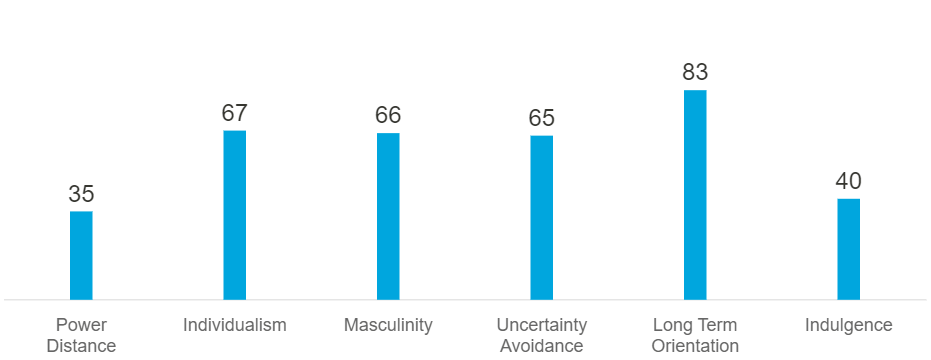
We then linked these characteristics of the culture to Marieke de Mooij’s research on German promotion style.
Excerpts from our report (translation):
Germans favor orderly and logical presentations. Their style is clean, rational, direct. Quality, technology and design are important points of attraction. Product benefit to the user and technical details are important elements in messages
Marieke de Mooij
Winning is important, especially in terms of competence: 'Testsieger' illustrates this point.
Marieke de Mooij
Then, considering the research conducted, we evolved the extent to which the company meets these socio-cultural requirements. Here we used customer testimonials, interviews and questionnaires conducted after which we provided recommendations.
Results we are proud of:
- We managed to provide a clear picture of the factors that influence loyalty and supported our arguments with expert resources (in addition to those mentioned, 5 other expert studies were used for this part alone)
- The arguments resulting from our research were supported by the opinions of customers who tested the product.
- We offered 2 solutions to improve loyalty (both closely related to co-creation)
- We explained the existing ambiguity of the packaging used and the design of the website and then offered solutions for improvement.
- We presented how to promote the product, taking into account the interests of the customers
Other resources used in our research
In our research we reviewed several articles, but we used findings from 16 scientific articles including the following publications we used: emerald.com, academicjournals.com, researchgate.com, sciencedirect.com, jstor.org.
An important resource that helped us to identify existing trends that we needed to take into account was euromonitor.com from which we used the following 5 articles.
1. Top 10 Global Consumer Trends 2019, available here.
2. Top 10 Global Consumer Trends 2021, available here.
3. Health by Generation: Understanding Healthy Lifestyles and Behaviours, July 2020 available here.
4. Plant-based Eating and Alternative Proteins, July 2021, available here.
5. Clean Label: From Health to Transparency, March 2021, available here.